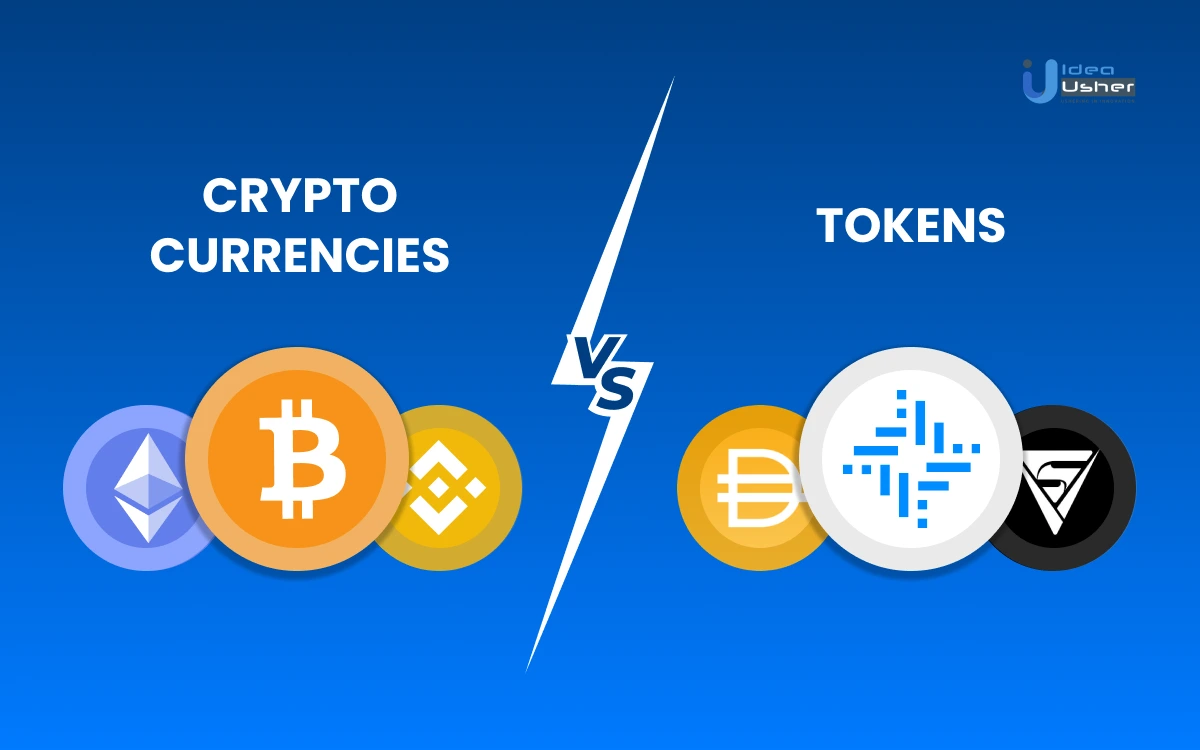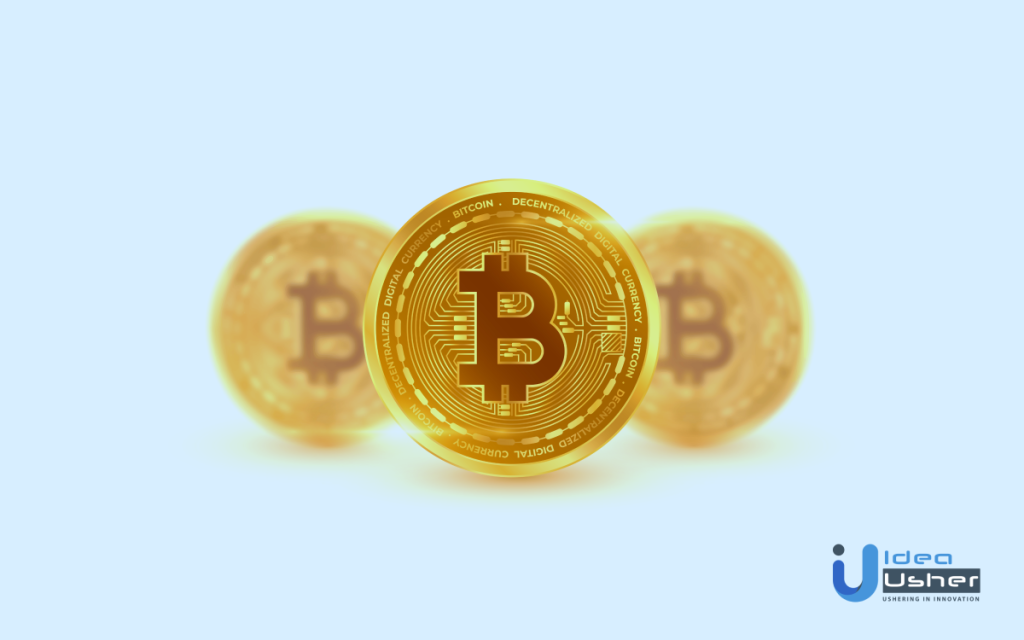
The world of digital assets has caught everyone’s attention in the past few years. Since the advent of blockchain, cryptocurrency has become the buzzword. However, people often confuse the terms ‘cryptocurrencies’ and ‘tokens.’ It’s important to understand that these terms are used to describe different things. Therefore, anyone entering the crypto world must have a clear understanding of cryptocurrencies vs. tokens.
In this blog, we discuss what are cryptocurrencies and tokens, and the fundamental differences between the two.
What are digital assets?
Before we delve into the discussion about cryptocurrencies and tokens, we need to know what digital assets are.
In simple terms, digital assets are non-tangible items created, bought, sold, and stored in a digital format. A digital asset is minted when we add new information to a particular blockchain. Users can exchange existing digital assets or create fresh (mint) ones using blockchain entries.
Both cryptocurrencies and tokens are types of digital assets that can be traded on crypto platforms.
What are cryptocurrencies?
Cryptocurrencies are digital assets that are secured by cryptography. This feature basically prevents them from being counterfeited. A cryptocurrency exists on a network distributed across many computers; thus making it difficult for governments or authorities to control it.
A cryptocurrency is considered a blockchain’s native currency or asset because it is issued by the blockchain on which it runs. For instance, Ether is the native cryptocurrency of the Ethereum blockchain.
Key characteristics of cryptocurrencies
1. Anonymous
Cryptocurrency transactions are anonymous, and users do not need to identify themselves while making the transaction. When a user submits a transaction request, the decentralized network verifies and records the same on the blockchain. Transactions are associated with a random sequence of characters rather than the owner’s identity, including personal or business data.
The crypto transactions’ authentication requires public and private keys, allowing the users to transact on crypto platforms using anonymous digital identities and securely authenticate their transactions.
2. Decentralized
Blockchain and cryptocurrencies are both politically and architecturally decentralized. Political decentralization refers to the absence of control by the government or central authority. Architectural decentralization means there is no central point of failure. The transactions are distributed across a network of computers, and it isn’t easy to trace a transaction to a central spot.
3. Irreversible and immutable
One cannot undo the transactions made using cryptocurrencies, and nobody other than the private key owner can move their digital assets.
Also, since the transactions are recorded on the blockchain, they cannot be changed once registered. As no third party controls or monitors these transactions, the transaction records are made public and immutable.
Types of cryptocurrencies
Cryptocurrencies usually fall into two categories:
1. Coins
Crypto coins are a type of cryptocurrency native to the blockchain on which they run. They have different valuations and are used for varied purposes.
Bitcoin was the first crypto coin to be launched and is also the native coin for the Bitcoin blockchain. Other coins like Ether, Dogecoin, Litecoin, etc., were launched after Bitcoin and were named ‘Altcoins.’
Crypto coins act as a store of value and medium of exchange, similar to fiat currencies. However, some coins use smart contracts to offer other features. For example, DASH is a crypto coin that also allows its holders to vote in a decentralized autonomous organization (DAO).
You can earn crypto coins using two methods: traditional mining using Proof-of-Work (PoW) consensus mechanism or earning via the modern approach called Proof-of-Stake (PoS) consensus mechanism.
2. Tokens
Tokens are a type of cryptocurrency that is not native to blockchain. Instead, they are built on top of other crypto coins’ blockchains.
For instance, DAI, LINK, and COMP are crypto tokens built using the Ethereum blockchain.
They utilize smart contracts to serve various purposes like investment, accessing platform-specific services, playing games, etc. Unlike coins, they do not act as a medium of exchange. They are assets that are physically moved when they are spent.
For example, when a non-fungible token (NFT) is sold, its ownership is transferred to the buyer. There isn’t merely a change of account balances.
As stated at the beginning of the article, the terms ‘cryptocurrencies’ and ‘tokens’ are often considered synonymous. However, it is essential to note that cryptocurrency is a superset that includes coins and tokens as subsets.
Popular crypto coins
1. Bitcoin (BTC)

Bitcoin, the first and most popular cryptocurrency, is a digital currency that was created in 2009. It works with a decentralized ledger system rather than a central bank or government banking system. An anonymous person using the alias Satoshi Nakamoto created it in 2009.
Bitcoin, being a cryptocurrency, is accepted as a form of payment for goods and services in the same way as fiat currency. Despite its decentralized nature, the most appealing aspect of bitcoin is its competitive exchange rate versus the US dollar, which attracts potential investors and traders. Even though it is not legal tender, Bitcoin remains a popular type of cryptocurrency.
2. Ether (ETH)
Ether, launched in 2015, is the second largest cryptocurrency after Bitcoin, and it is the native crypto coin of the Ethereum blockchain.
The feature that distinguishes Ethereum from Bitcoin is that it is programmable. This feature allows you to build and deploy smart contracts and decentralized applications on the platform without any control or interference from a third party.
When you send ETH, you need to pay a fee in ETH to use the Ethereum network, and this fee incentivizes the block producer to verify what you do. Miners who check that the transactions on Ethereum are fair also get small amounts of newly-issued ETH as rewards.
Furthermore, you can use ETH as collateral to generate utterly different crypto tokens on Ethereum. You can also borrow, lend, and earn interest on ETH and other ETH-backed tokens.
Presently, the Ethereum blockchain uses the PoW mechanism. However, the blockchain is coming up with Ethereum Merge, a plan to transition from PoW to PoS.
3. Cardano (ADA)
Cardano is a proof-of-stake blockchain platform using ADA as the currency. It is also the first blockchain that was founded on peer-reviewed research and developed through evidence-based methods. Charles Hoskinson, one of the five initial founding members of Ethereum, is the co-founder of Cardano.
Cardano is one of the most popular PoS platforms and is often considered better than Ethereum. But Cardano is still in its early stages and has much to do regarding DeFi applications.
4. Binance Coin (BNB)
Binance Coin is the native cryptocurrency of the Binance blockchain, associated with the Binance exchange. It was initially based on the Ethereum network but later became the native currency of Binance’s blockchain, the Binance chain. It was launched in 2017 and had an initial maximum supply of 200 million BNB coins.
BNB coins are used for:
- Payment of transaction fees on Binance platforms
- Booking travel accommodations
- Entertainment purposes
- Paying for online services
- Financial goals (like loans and investment)
5. Solana (SOL)
Solana is a currency that runs on the Solana blockchain. This blockchain is designed to support dApps. People often compare Solana and Ethereum as they both use smart contracts, essential to run applications like DeFi and NFT.
However, Ethereum uses the PoW consensus mechanism, whereas Solana uses PoS, which is less harmful than PoW.
SOL is the ninth largest cryptocurrency by market capitalization.
Types of crypto tokens
1. Exchange tokens
Exchange tokens are tokens issued by cryptocurrency exchanges. Their primary purpose is to raise funding for the exchanges. The users can use exchange tokens to pay fees, buy or sell other cryptocurrencies, and perform other operations such as voting.
Popular exchange tokens include the KuCoin token, Gemini USD, Bibox token, Huobi token, etc.
2. Security tokens
These are securitized tokens representing ownership of a real-world asset. These tokens derive value from external assets that can be traded under financial regulations as security. Moreover, properties, bonds, real estate, equipment, etc., can be tokenized using security tokens. Tokenization is basically the process of converting a real-world asset into a digital asset.
The value of security tokens is directly linked to the asset they represent. For example, if a token represents a real-estate property, its value will increase or decrease depending on the property valuation. The higher the asset’s value, the higher the token’s value.
3. Governance tokens
Decentralized apps and protocols are continuing to rise. As a result, there is an increased need to refine the decision-making processes around them. Governance plays a critical role in creating a synergy where stakeholders can unite to shape the protocol’s future through discussions and debates.
Moreover, governance tokens help in making decisions regarding the protocol’s future. The token holders get voting power and a right to voice their opinion while making decisions about new future proposals.
4. Utility tokens
Utility tokens are tokens that are used to purchase goods or services in an ecosystem. They’re usually created for a particular company or project but can also be used as a payment method on other platforms. They’re often tradable and can be purchased with other cryptocurrencies or fiat currencies, like dollars.
5. Non-fungible tokens

Non-fungible tokens (NFTs) are digital assets that represent a unique, physical asset- an item of value that can be physically possessed. So, it means that NFTs are not interchangeable with other NFTs. They’re like rare collectibles but can be traded like everyday items on an open market.
NFTs differ from traditional assets in that they don’t have any inherent value; rather they’re just digital representations of physical objects like art or real estate.
NFTs can take any of the following forms:
- Digital art
- Collectibles
- Music
- Video game items
- Memes
- Domain names, and more.
What’s the difference between crypto coins and tokens?
Crypto coins and tokens are types of cryptocurrency, and it is natural to confuse the two terms. However, in the following table, we summarize the critical differences between the two.
| Crypto Coins | Tokens |
| Crypto coins are built into a blockchain and are native to it. | Crypto tokens are built on top of another blockchain. |
| Creating crypto coins requires significant resources and skills as it is complex. | Tokens are relatively easier to create. |
| They act as a digital currency only. | They serve functions other than being a digital currency. |
| The crypto coins are generally earned through mining. | One can earn tokens through initial coin offerings (ICO). |
| Examples: BTC, ETH, SOL, BNB, etc. | Examples: RIF, SOV, LINK, etc. |
Winding up
Cryptocurrencies and tokens are fundamentally different. Cryptocurrencies are digital assets that can be used to buy goods and services. Tokens, on the other hand, are a subset of cryptocurrencies that represent a stake in the future success of a business or project.
Cryptocurrencies can either be coins or tokens. Coins are not investments; they’re currencies. They have no intrinsic value and shouldn’t be considered as such. Tokens, on the other hand, are an investment opportunity- the more tokens you have, the more you can participate in the success of a project or company.
The craze for cryptocurrencies and tokens is not going to die soon. It can be an opportunity for entrepreneurs to develop their own crypto trading platforms. But developing such a platform on one’s own can be very complex and tedious.
Idea Usher is a leading technology company providing app development, web development, blockchain development, and NFT marketplace development services, among others. Our experts have years of experience in the relevant fields, and we undoubtedly deliver the best-in-class digital solutions to our clients.
Contact us and catapult your digital business to newer heights.
E-mail: [email protected]
Phone Numbers : (+91) 946 340 7140, (+91) 859 140 7140 and (+1) 732 962 4560
Frequently asked questions
Here are a few exciting FAQs about cryptocurrencies vs. tokens.
1. Is Ethereum a coin or a token?
Coins are built into a blockchain and are native to the same. Ethereum is a blockchain whose native currency is Ether (ETH). Further, Ether is a coin, not a token.
2. Can a token become a coin?
Yes, a token can become a coin when the project develops its own blockchain, and the tokens are migrated to the new blockchain as coins. For example, BNB was earlier a token on the Ethereum blockchain but later became a coin after the development of the Binance chain.
3. How many types of crypto tokens are there?
There are several types of crypto tokens like exchange, security, utility, governance tokens, NFTs, etc.









Nikhil Jassal